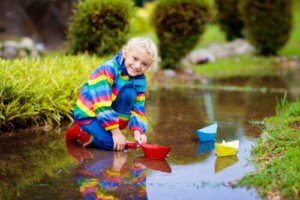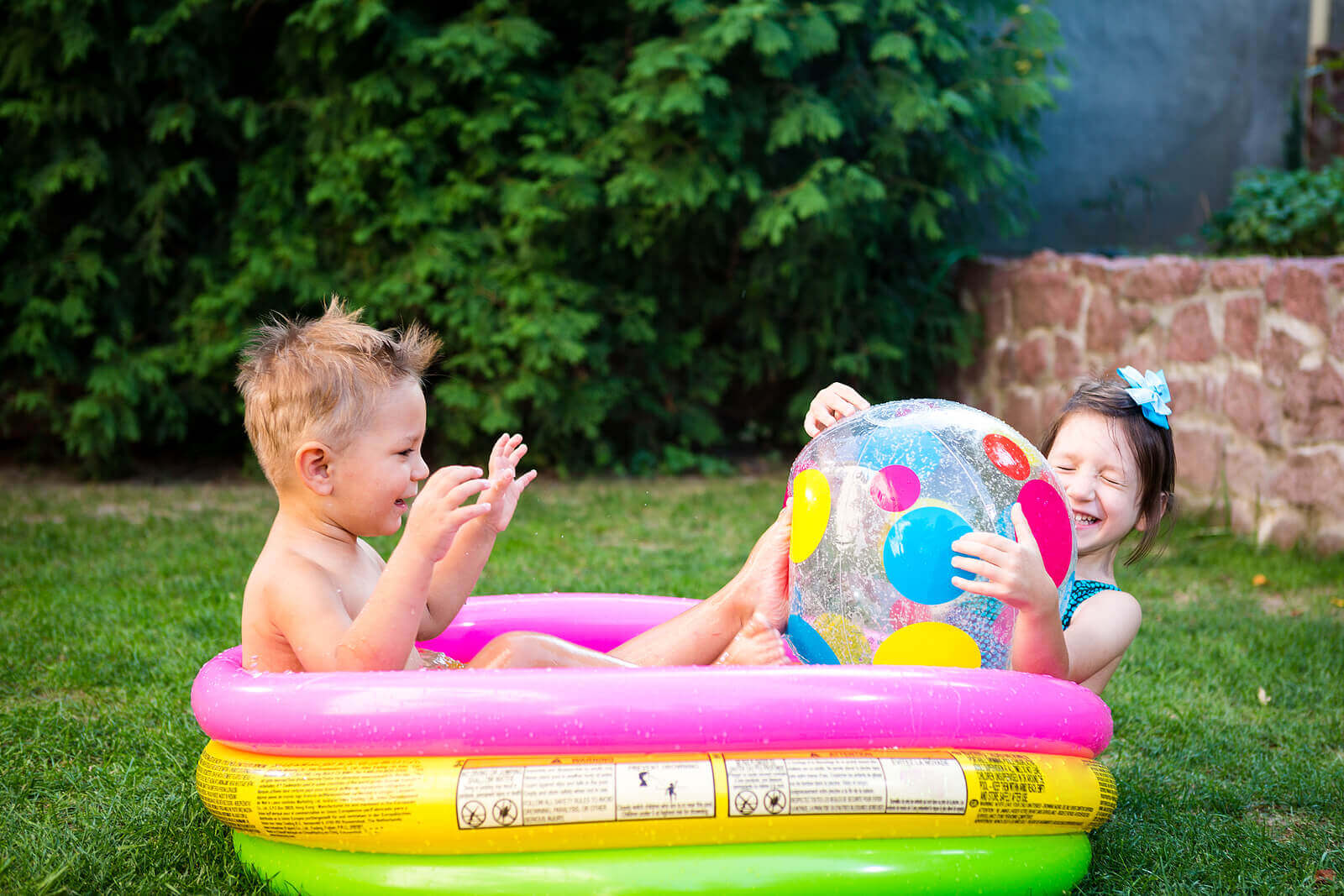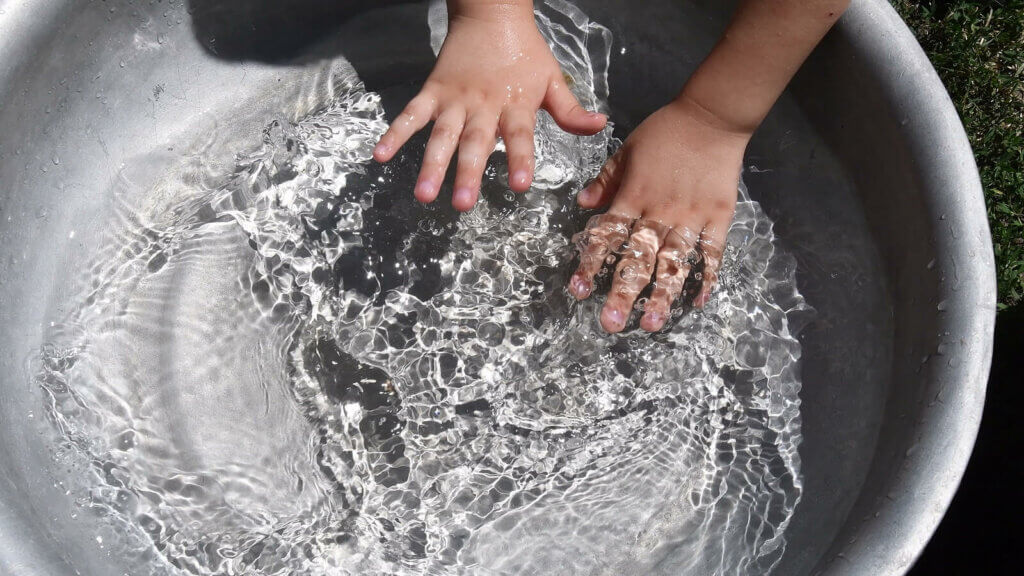8 Benefits of Playing with Water for Children


Written and verified by the psychopedagogue María José Roldán
All children love playing with water. In addition to that, it’s a fun way to keep them entertained – just make sure it’s not too cold!
Playing with water has many benefits for children. You’ll be surprised and you’ll find out just why they’re common childhood activities. Even though children often play with water at school, why not do it at home too?
Playing with water
Playing with water usually involves all sorts of containers and toys. To be on the safe side, it’s best to have the water in a large tub or placed on a special table to avoid accidents.
Children love to stand near a high table with water, and play with all sorts of toys and containers. Enjoyment is guaranteed!

Benefits of playing with water
Playing with water helps a child’s development, and it’s just as much fun and just as important as playing with sand. They’ll never get bored! This simple activity develops skills in the four main areas of development: social, emotional, cognitive, and physical.
1. Fine and gross motor skills
Developing fine and gross motor skills is important during early childhood. Children need to learn to control their large and small muscles, and what better way to do that than by having fun?!
Movements such as pouring, filling, dipping, splashing, mixing, spraying, squashing, and squeezing are excellent ways to develop these skills.
2. Concentration while playing with water
When children are playing with, and in, water, they have such a good time that they learn to concentrate without even realizing it, all while exploring and discovering at the same time.
It keeps them entertained for long periods of time, and this helps their long-term concentration. This, in turn, will benefit their formal learning skills, since being able to concentrate in the classroom is a vital skill to acquire.
3. Math skills
Playing with water is a great way for children to develop basic math skills. Learning these skills through play is necessary before formal school math begins.
As children fill and pour out containers of different sizes, they learn about volume and capacity and experience concepts such as full, empty, more, and less. They also learn about displacement when moving water from one place to another.
4. Science concepts when playing with water
Playing with water also allows them to experience scientific concepts in a practical way. Children learn physics early on by discovering the many different characteristics of water, such as:
- Sand is heavier when mixed with water
- When sand is wet, it’s different than when it’s dry
- Water spills and falls to the ground (never going upwards)
- Air makes the water move
- Depending on where it is, water changes its shape
- Water can go from solid to liquid, and from liquid to solid again
- Some things float in water and others sink
5. Language and vocabulary
A child’s vocabulary increases as they experience new things and learn to describe and understand what they’re doing. By playing with water and the different tools, toys, and containers, young children develop a new vocabulary regarding these elements, as well as the actions they’re performing.

6. Social skills
When children play together they always make more noise and create more energy. They also learn to handle conflicts that may arise between them. Playing with water is an activity that calms and relaxes them.
They develop social skills while playing with water, as they learn to share and cooperate together, or toward common goals. At first, it’s normal for the adult to lead the children in how to play, but when they’re left alone, you’ll be surprised how well they can play.
7. Sensory exploration while they play with water
Children love to explore using their senses. Playing with water is a great way for children to discover their senses, and it’s important to give them plenty of opportunities to do so.
8. Skills to enhance creativity
Playing with water will also help children’s problem-solving abilities, because it encourages creativity. They’ll have to think about how to add the right water to a container, and pour it out without it falling, etc.
As you can see, there are many benefits when young children play with water. It’s a way to empower their minds and also to have fun and learn almost without realizing it. It’s the wonder of learning by playing!
All children love playing with water. In addition to that, it’s a fun way to keep them entertained – just make sure it’s not too cold!
Playing with water has many benefits for children. You’ll be surprised and you’ll find out just why they’re common childhood activities. Even though children often play with water at school, why not do it at home too?
Playing with water
Playing with water usually involves all sorts of containers and toys. To be on the safe side, it’s best to have the water in a large tub or placed on a special table to avoid accidents.
Children love to stand near a high table with water, and play with all sorts of toys and containers. Enjoyment is guaranteed!

Benefits of playing with water
Playing with water helps a child’s development, and it’s just as much fun and just as important as playing with sand. They’ll never get bored! This simple activity develops skills in the four main areas of development: social, emotional, cognitive, and physical.
1. Fine and gross motor skills
Developing fine and gross motor skills is important during early childhood. Children need to learn to control their large and small muscles, and what better way to do that than by having fun?!
Movements such as pouring, filling, dipping, splashing, mixing, spraying, squashing, and squeezing are excellent ways to develop these skills.
2. Concentration while playing with water
When children are playing with, and in, water, they have such a good time that they learn to concentrate without even realizing it, all while exploring and discovering at the same time.
It keeps them entertained for long periods of time, and this helps their long-term concentration. This, in turn, will benefit their formal learning skills, since being able to concentrate in the classroom is a vital skill to acquire.
3. Math skills
Playing with water is a great way for children to develop basic math skills. Learning these skills through play is necessary before formal school math begins.
As children fill and pour out containers of different sizes, they learn about volume and capacity and experience concepts such as full, empty, more, and less. They also learn about displacement when moving water from one place to another.
4. Science concepts when playing with water
Playing with water also allows them to experience scientific concepts in a practical way. Children learn physics early on by discovering the many different characteristics of water, such as:
- Sand is heavier when mixed with water
- When sand is wet, it’s different than when it’s dry
- Water spills and falls to the ground (never going upwards)
- Air makes the water move
- Depending on where it is, water changes its shape
- Water can go from solid to liquid, and from liquid to solid again
- Some things float in water and others sink
5. Language and vocabulary
A child’s vocabulary increases as they experience new things and learn to describe and understand what they’re doing. By playing with water and the different tools, toys, and containers, young children develop a new vocabulary regarding these elements, as well as the actions they’re performing.

6. Social skills
When children play together they always make more noise and create more energy. They also learn to handle conflicts that may arise between them. Playing with water is an activity that calms and relaxes them.
They develop social skills while playing with water, as they learn to share and cooperate together, or toward common goals. At first, it’s normal for the adult to lead the children in how to play, but when they’re left alone, you’ll be surprised how well they can play.
7. Sensory exploration while they play with water
Children love to explore using their senses. Playing with water is a great way for children to discover their senses, and it’s important to give them plenty of opportunities to do so.
8. Skills to enhance creativity
Playing with water will also help children’s problem-solving abilities, because it encourages creativity. They’ll have to think about how to add the right water to a container, and pour it out without it falling, etc.
As you can see, there are many benefits when young children play with water. It’s a way to empower their minds and also to have fun and learn almost without realizing it. It’s the wonder of learning by playing!
All cited sources were thoroughly reviewed by our team to ensure their quality, reliability, currency, and validity. The bibliography of this article was considered reliable and of academic or scientific accuracy.
- Fernández Sainz-Maza, E. (2017). Ahogamientos por Inmersión y Estrategias Preventivas. https://repositorio.unican.es/xmlui/bitstream/handle/10902/11698/Fern%c3%a1ndez%20Sainz%20-Maza%20Emma.pdf?sequence=4&isAllowed=y
- Gruss L., Rosemberg F. (2017) Los niños y el juego. La actividad lúdica de 0 a 5 años. Editorial: Ediciones continente
- Rubio, B., Yagüe, F., Benítez, M. T., Esparza, M. J., González, J. C., Sánchez, F., … & de Seguridad, C. (2015, January). Recomendaciones sobre la prevención de ahogamientos. In Anales de Pediatría (Vol. 82, No. 1, pp. 43-e1). Elsevier Doyma.
- Vega-Franco, L. (2002). Ideas, creencias y percepciones acerca de la salud: reseña histórica. Salud pública de México, 44, 258-265. https://www.scielosp.org/article/ssm/content/raw/?resource_ssm_path=/media/assets/spm/v44n3/a10v44n3.pdf
This text is provided for informational purposes only and does not replace consultation with a professional. If in doubt, consult your specialist.








